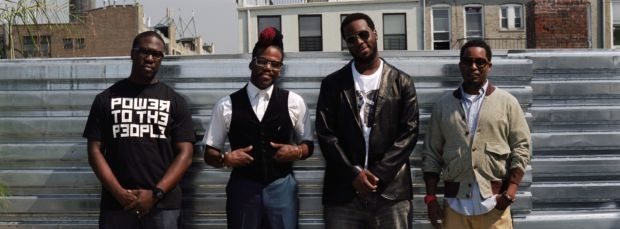Black Radio 2
 I was originally hoping – perhaps a little optimistically – that Black Radio 2 would find the Robert Glasper Experiment fusing R&B and jazz in a similar vein to Miles Davis’ breathtaking and transcendental fusion of rock & roll and jazz on 1969’s In a Silent Way. Based on Glasper’s track record, from the great work with his piano trio on Canvas and In My Element to his experimentations with hip-hop, R&B and electronica on Double Booked and further shifts towards a middle ground between R&B and jazz with 2012’s excellent Black Radio (which won a Grammy Award for Best R&B Album), one would think this would be inevitable. However, Black Radio 2 is less ambitious than expected, yet Glasper has still succeeded in creating a great R&B album – albeit not a great jazz album.
I was originally hoping – perhaps a little optimistically – that Black Radio 2 would find the Robert Glasper Experiment fusing R&B and jazz in a similar vein to Miles Davis’ breathtaking and transcendental fusion of rock & roll and jazz on 1969’s In a Silent Way. Based on Glasper’s track record, from the great work with his piano trio on Canvas and In My Element to his experimentations with hip-hop, R&B and electronica on Double Booked and further shifts towards a middle ground between R&B and jazz with 2012’s excellent Black Radio (which won a Grammy Award for Best R&B Album), one would think this would be inevitable. However, Black Radio 2 is less ambitious than expected, yet Glasper has still succeeded in creating a great R&B album – albeit not a great jazz album.
The success of Black Radio has attracted not only new audiences to Glasper’s music but opened the doors to the R&B and hip-hop worlds for the artist. Black Radio 2 features a whole host of big names, from Norah Jones, Faith Evans and Emeli Sandé to Snoop Dogg, Lupe Fiasco and Common; all of whom certainly excel on their individual tracks. The Robert Glasper Experiment itself (which consists of pianist Glasper, vocoder and saxophonist Casey Benjamin, bassist Derrick Hodge and drummer Mark Colenburg), although present on every track, has taken more of back seat this time around, instead deferring to the big name artists more so than on the original Black Radio.
Consequently, this is a much subtler album in terms of jazz input. Although Glasper’s piano can be heard frequently throughout the record, it generally tends to underscore rather than provide the action, while Benjamin is given only one sax solo on ‘Big Girl Body’, and his vocoder is rarely heard across the body of the record. Though the aficionados will surely be upset by this, Black Radio 2 has much else to offer.
Although the members of the Robert Glasper Experiment are present on every track, they have taken more of a back seat this time around, instead deferring to the big name artists more so than on the original Black Radio.
Standout tracks include the driven, drum and bass-inspired ‘Let it Ride’ (featuring Jones), the smooth neo-soul of ‘Somebody Else’ (Sandé), and the reworking of Stevie Wonder’s ‘Jesus Children of America’ with Lalah Hathaway. Due to the high quality of this cover and those previously exhibited on Black Radio (‘Smells Like Teen Spirit’ and ‘Cherish the Day’), one wishes Glasper would have included several more, as it is certainly an arena wherein The Experiment excels.
Nevertheless, new contributions such as ‘Yet to Find’ (with Anthony Hamilton) and the motivational ‘I Stand Alone’ – wherein Glasper employs his catchiest hook to date – are fresh and accessible. Despite the insistence that “we should all be unsatisfied with mimicking the popular” dictated towards the end of the latter track, this album comes closer than The Experiment have ever come to selling out. Here’s hoping that their next album offers the excitement, ambition and creativity promised by Double Booked and Black Radio.
Similar To: Guru’s Jazzmatazz, The RH Factor, Christian Scott
MP3: ‘Let it Ride’, ‘Jesus Children of America’

Comments (1)
It definitely has gone in a more pop-friendly direction, but the songs are still so much more stimulating than the pop tunes you hear on the radio. It’s about the artists and the concept of “Black Radio” that really drives the album, and maybe that’s why Glasper and crew took a backseat.